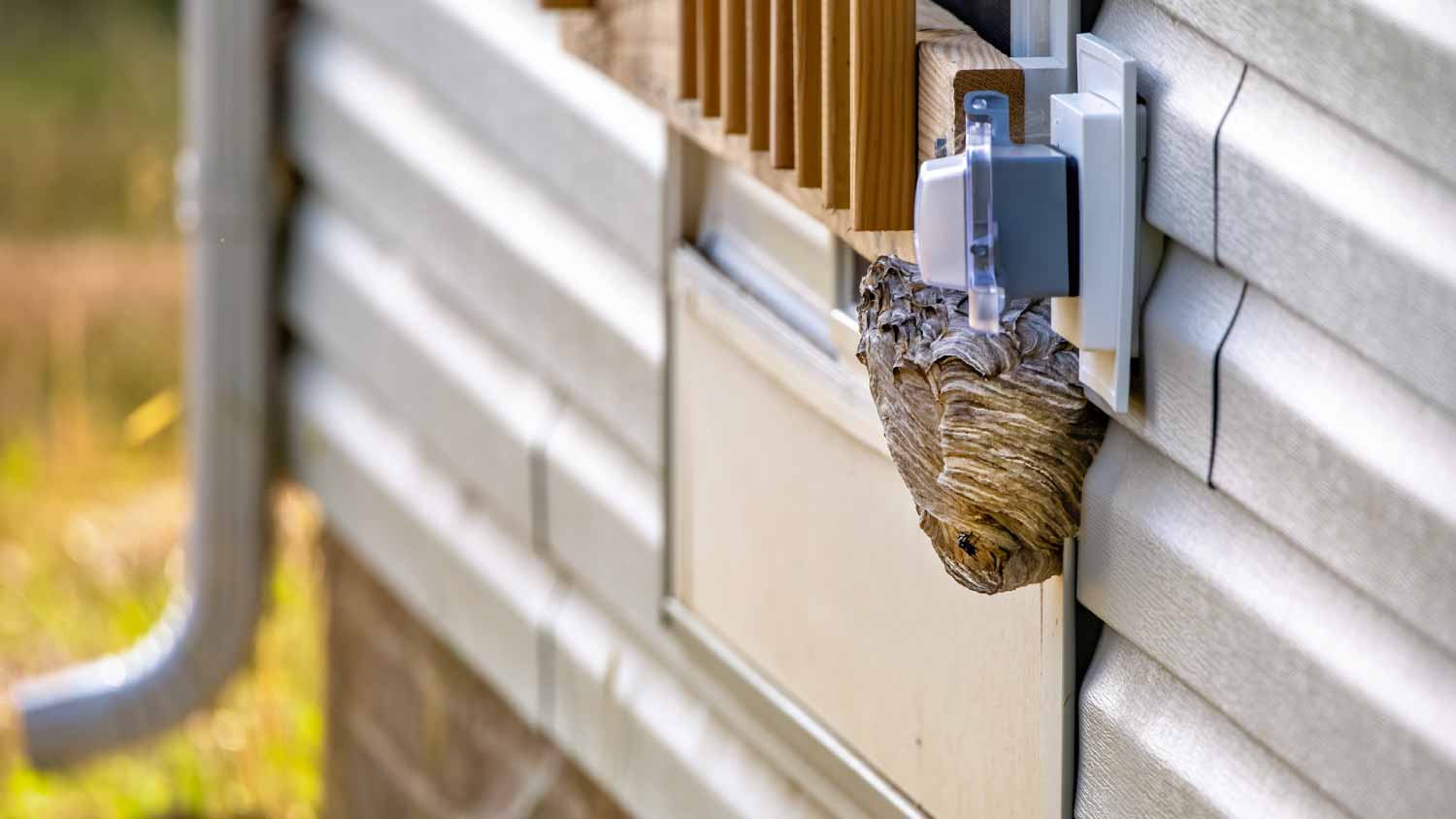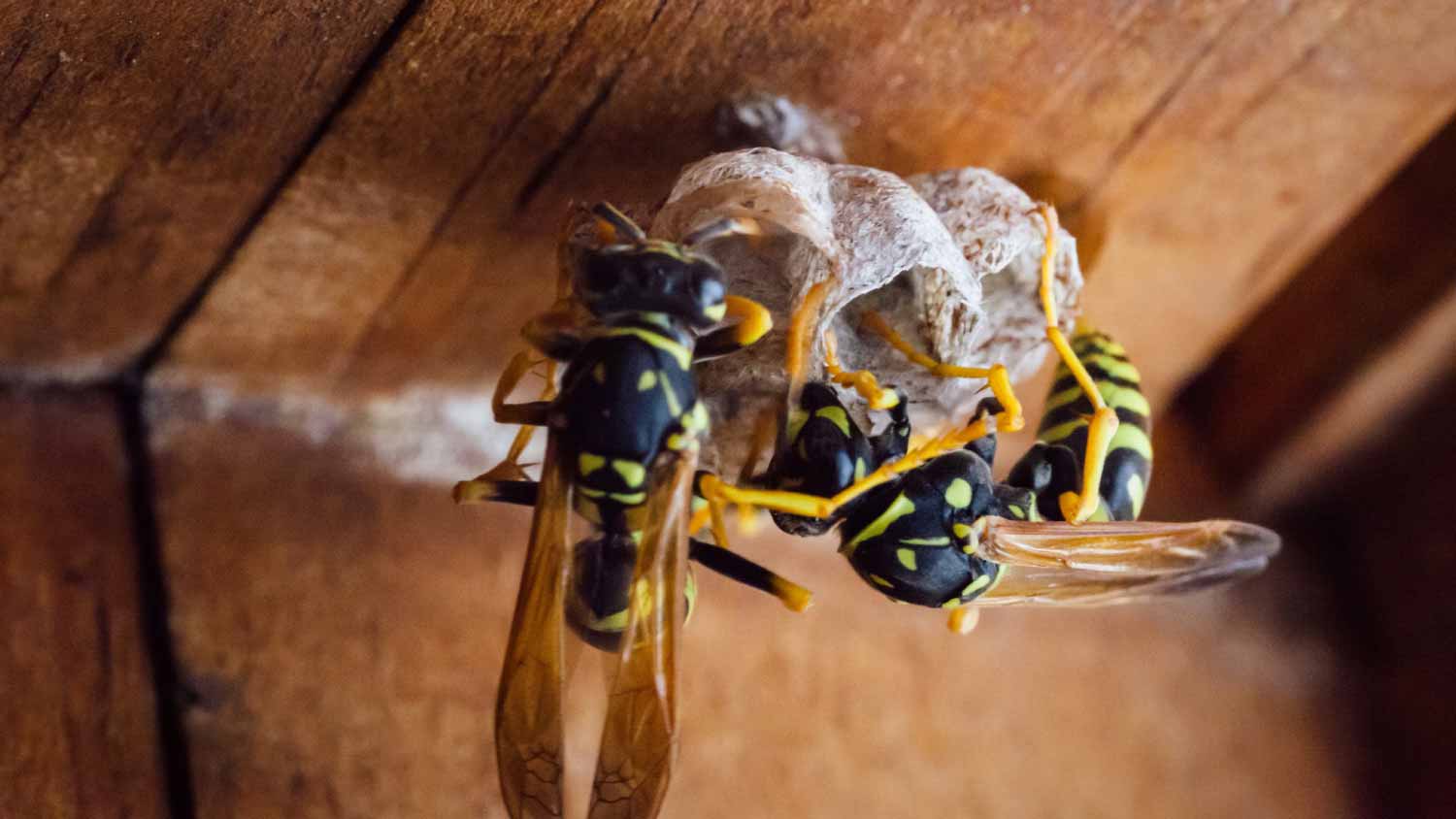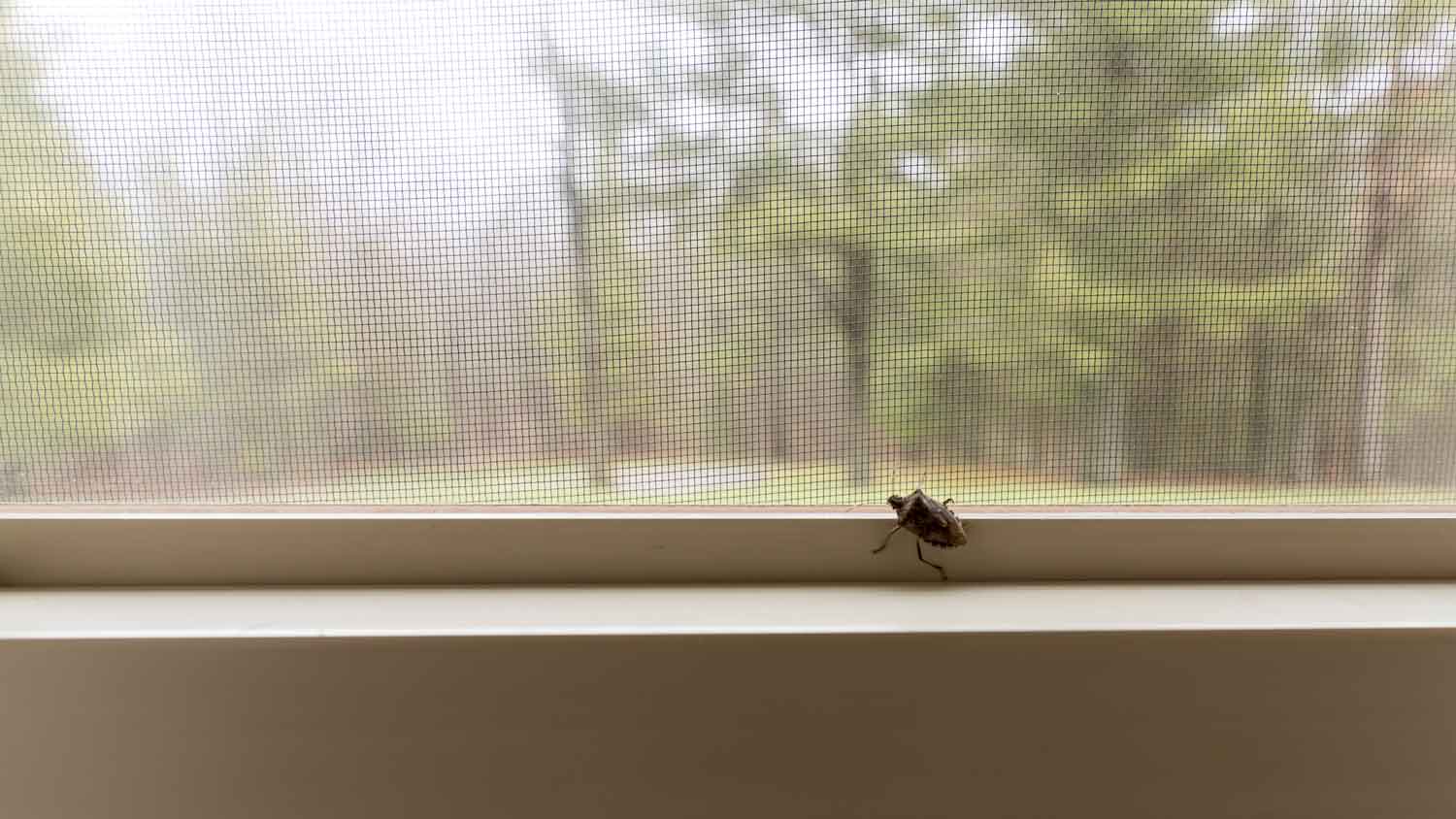
Whether you have bugs, bats, or rodents invading your home, you’ll want to contact an exterminator quickly. Find out how much pest control costs in Columbus, OH.
Don’t hesitate to hire an exterminator for your wasp problem


A professional wasp removal service should be responsible for eradicating wasps from your home.
The average cost for wasp removal is $525.
Wasps can be aggressive and cause severe allergic reactions in some people.
Wasps tend to nest in garages, attics, eaves, shed, and other dry, covered areas.
While wasps are essential pollinators for our ecosystem, they can become dangerous if they set up shop near or in your home. If you’re wondering when to call an exterminator for wasps, don’t worry, we’ve got you covered.
If wasps are invading your home or backyard, you will need to take action to remove them. Is a DIY approach the way to go, or should you hire a professional exterminator to take on this hazardous task? Learn when to call an exterminator for wasps, factors to consider, and how much it costs.
Some types of hornets and wasps are more aggressive than others, so call a professional exterminator if you spot a nest in your yard that's bigger than a fist. Don't hesitate to take pest control action to prevent the infestation from growing.
Since wasps play a critical role in the ecosystem, you don't want to exterminate them in their natural habitat for no reason. However, if they are swarming in areas where you frequent, such as the porch, deck, or backyard, that's when you should call an exterminator for wasps. You should also hire a local wasp exterminator if you spot a wasp nest in your yard that’s bigger than your fist, which indicates a full infestation and could be dangerous.
While many DIYers may want to remove these pests or their nests themselves, it’s not a good idea. Wasps can be extremely dangerous, especially when provoked or threatened, and even deadly, if you have a severe allergic reaction to stinging insects. That’s why it’s best to hire a professional exterminator at the first sign of a full-blown infestation.

Some people may want to try to exterminate wasps themselves, but it's always best to leave it to the pros. If you're unsure whether your situation warrants an exterminator, here are some factors to help you decide.
Spotting a wasp here and there is normal, especially if you’re outdoors. But if you notice them swarming around your house, they may be building a nest nearby or have already moved in. If possible, watch them from a safe distance to see if they slip into a crevice of your home or if you can see their nest.
Whatever you do: Don't get too close to these pests because most wasps can be aggressive if provoked. If there are an abundance of wasps, it's time to call an exterminator.
If you see a wasp nest near or in your home, you need to call a professional wasp exterminator immediately. A wasp nest looks like a papery gray balloon, with visible cells at the bottom. A nest can mean an infestation, holding anywhere from hundreds to up to 10,000 wasps, depending on the species. The type of wasps can also determine where they will nest, which include spots like eaves, attics, garages, sheds, and other dry undisturbed areas.
Wasps can damage your home because they tunnel through wood, weakening its integrity. The location of the nest will determine how fast you need to call in a professional to remove it. A location that’s close to or inside your home warrants an immediate professional inspection.
According to National Geographic, there are 30,000 identified species of wasps in the world. However, some types of wasps are more aggressive than others. For instance, yellow jackets are extremely territorial and aggressive. They can actually bite and sting—repetitively.
Bald-faced hornets are also very aggressive and can shoot venom from their stingers. When they spray venom, they aim for the eyes. While dealing with any type of wasp can be dangerous, if you spot an aggressive species in your yard, you should always have a professional handle the removal job.

The cost to remove wasps ranges from $300 to $700, depending on factors such as the removal method, location, size of the nest, and type of wasps. For instance, bald-faced hornets are typically more expensive to remove due to the risk and labor involved. Their nests are located in tree canopies, so that’s a much more difficult removal.
The average price for a typical wasp removal is around $525. However, it can range from as low as $100 up to $1,300 for complex infestations. Be sure to get multiple quotes from wasp removal services to find the best deal for your situation.
While there are DIY ways to try to get rid of wasps, it can be extremely dangerous to attempt to exterminate them yourself. Various types of wasps will swarm and chase you if provoked.
That's why it's always best to hire a professional wasp exterminator near you to take on this task. Wasps can pose serious health risks, especially if you are allergic to them. If you don't know if you have an allergy or not, it's definitely not worth taking the risk. Plus, professionals have the tools, skills, and experience necessary to remove a wasp nest safely and prevent future infections.
From average costs to expert advice, get all the answers you need to get your job done.

Whether you have bugs, bats, or rodents invading your home, you’ll want to contact an exterminator quickly. Find out how much pest control costs in Columbus, OH.

If you need to get rid of bugs and pests making your home unsafe, it's time to decide if fumigation is necessary. Learn more about average fumigation costs.

When calculating the cost of hiring a flea exterminator, consider your home size and the infestation extent. This guide will help you figure out what to budget.

Mosquitoes can ruin any outdoor summer soirée. Prevent bites, itchiness, and annoyance by learning how to get rid of mosquitoes in your yard for good.

Stink bugs are annoyingly persistent, but there are ways to fight back. Learn how to exterminate stink bugs in the house and prevent them from coming back.

Taking on a flea infestation means destroying the source—their eggs. In addition to calling the pros, there are some DIY tricks for how to get rid of flea eggs.